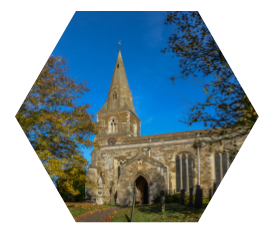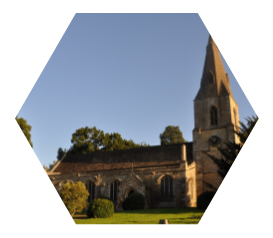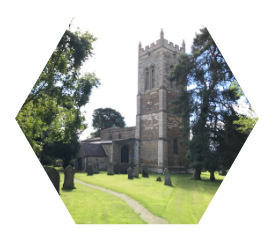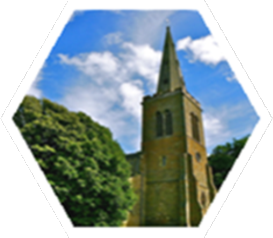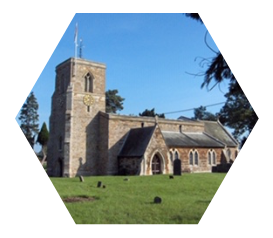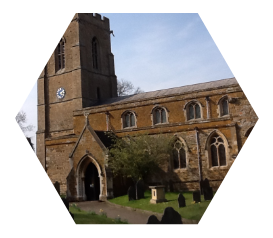ST. HELEN'S CHURCH - A BRIEF HISTORY
At the time of the Domesday book there was a priest in Sibbertoft; this almost certainly means that there was a chapel or a preaching cross, probably on the site of this church. The earliest part of the church that we see today dates from about 200 years later, sometime in the 13th century. The dedication to St. Helen often indicates an early founded church; it commemorates the Christian mother of Constantine, the first Christian Roman Emperor.
Chancel
The chancel is one of the oldest parts of the church, with an attractive stained glass window dedicated to St. Alban and St. Helen. On the south side is a 13th century priest’s door with a small section of beautiful carving above it; this is one of the gems of St Helen’s, an unusual surviving remnant of the 14th century rood screen which would have separated the nave and the chancel.
On the north side of the chancel is a small arch through the chancel wall leading to the present vestry; this area was probably added to the north of the chancel when the North aisle was built. It was formerly a separate chapel dedicated to the Virgin Mary. A 1499 will leaves money ‘for the upkeep of the chapel to the Blessed Mary’.
North and South aisles
The north aisle was added to the existing nave sometime in the 14th century. The south aisle was built in 1864 when the church was enlarged and restored.
The Tower and bells
The tower at the west end of the church is 15th century and has a peal of 5 bells. The largest bell was originally cast in 1825 to celebrate the 21st birthday of George Payne of Sulby, who was reputed to be the youngest son of George 4th from his secret marriage to Maria Fitzherbert. The bells were restored and re-hung in 1998.
Churchyard
There are a number of interesting residents of the churchyard, including the Reverend Miles Joseph Berkeley, who came to Sibbertoft in 1868 and died here in 1889; he was a noted botanist, corresponded with Charles Darwin and catalogued, among others, the fungi collected on the Beagle voyage. There is a Berkeley Street in the village as a reminder of this well known vicar.
Also Lady Beatrice Taylour, wife of Sir George Stanley. She lived at the Manor House and developed several new varieties of Snowdrop, one of which still blooms around her grave; her work is continued by her grandson at Hodsock Priory in Nottinghamshire.
A more detailed guide is available in the church; we hope that you will enjoy a visit to our church and its tranquil surroundings.
